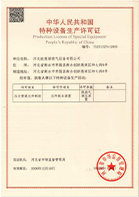
Nov . 10, 2024 12:44
Back to list
Natural Gas Pressure Reduction Valve System Setup and Maintenance Guide
Understanding Natural Gas Pressure Relief Valves
Natural gas is an essential energy source that powers homes, industries, and vehicles. To ensure its safe and efficient transportation and usage, various safety mechanisms are employed, one of which is the pressure relief valve. This article explores the function, importance, and operational principles of natural gas pressure relief valves.
What is a Pressure Relief Valve?
A pressure relief valve (PRV) is a mechanical device designed to automatically release pressure from a system when it exceeds predetermined limits. In the context of natural gas systems, PRVs ensure that excess pressure does not build up in pipelines, storage tanks, or other critical equipment, thereby preventing potential hazards such as explosions or equipment failures.
How Does It Work?
Natural gas is transported through pipelines at varying pressures, and it is crucial to maintain appropriate pressure levels. A pressure relief valve is usually set to a specific pressure limit. When the pressure within the pipeline exceeds this limit, the valve opens to allow some gas to escape. This action reduces pressure in the system and enhances safety.
When the pressure drops back to a safe level, the valve automatically closes, thereby returning the system to its normal operating conditions. This automatic operation ensures minimal manual intervention and continuous monitoring of system pressure.
.
1. Safety The primary function of a pressure relief valve is to enhance safety. By preventing overpressure situations, PRVs help avert catastrophic failures that could lead to explosions or gas leaks. These incidents can cause significant damage to infrastructure and pose serious risks to human life.
صمام تخفيض ضغط الغاز الطبيعي

2. Regulatory Compliance Various regulatory bodies establish guidelines and requirements for maintaining safe operations in the natural gas industry. The installation of pressure relief valves is often a mandatory requirement, ensuring that companies comply with safety standards.
3. Protection of Equipment Overpressure can cause damage to pumps, compressors, and other equipment. By controlling pressure levels, PRVs protect these assets and reduce maintenance costs associated with repairs or replacements.
4. Operational Efficiency A well-functioning pressure relief valve contributes to the overall efficiency of gas operations. By efficiently managing pressure levels, it helps to optimize process performance and minimize the energy costs associated with unnecessarily high pressures.
Types of Pressure Relief Valves
There are several types of pressure relief valves used in natural gas applications, including
- Spring-loaded valves These are the most common type, where a spring maintains the valve closed until the pressure surpasses a certain threshold. - Pilot-operated valves These valves use a smaller control valve to manage larger flows, making them suitable for high-pressure applications. - Balanced valves These are designed to operate effectively in fluctuating pressures, providing enhanced stability and performance.
Conclusion
Pressure relief valves are crucial components in the safe management of natural gas systems. They protect both people and infrastructure from the dangers of excess pressure. Understanding their operation, types, and importance ensures that stakeholders in the natural gas industry can maintain safety and efficiency in their operations. By investing in high-quality pressure relief valves and adhering to regulatory guidelines, businesses can effectively mitigate risks associated with natural gas transportation and usage, contributing to a safer energy future.
In summary, as natural gas continues to play a vital role in the global energy landscape, the importance of reliable safety measures, including pressure relief valves, cannot be overstated. These devices not only protect lives and equipment but also promote operational excellence within the industry.
Latest news
-
Safety Valve Spring-Loaded Design Overpressure ProtectionNewsJul.25,2025
-
Precision Voltage Regulator AC5 Accuracy Grade PerformanceNewsJul.25,2025
-
Natural Gas Pressure Regulating Skid Industrial Pipeline ApplicationsNewsJul.25,2025
-
Natural Gas Filter Stainless Steel Mesh Element DesignNewsJul.25,2025
-
Gas Pressure Regulator Valve Direct-Acting Spring-Loaded DesignNewsJul.25,2025
-
Decompression Equipment Multi-Stage Heat Exchange System DesignNewsJul.25,2025

